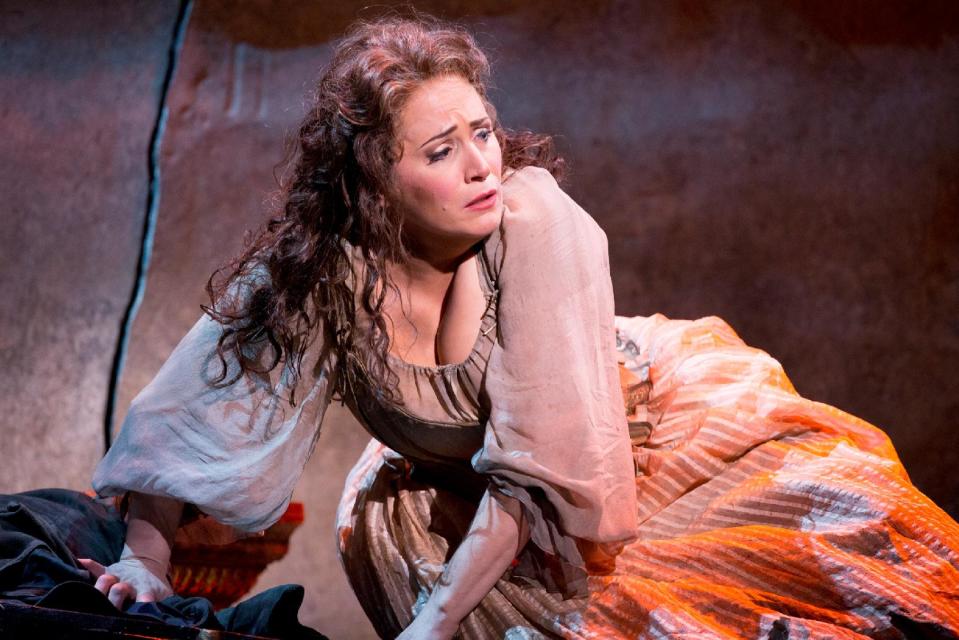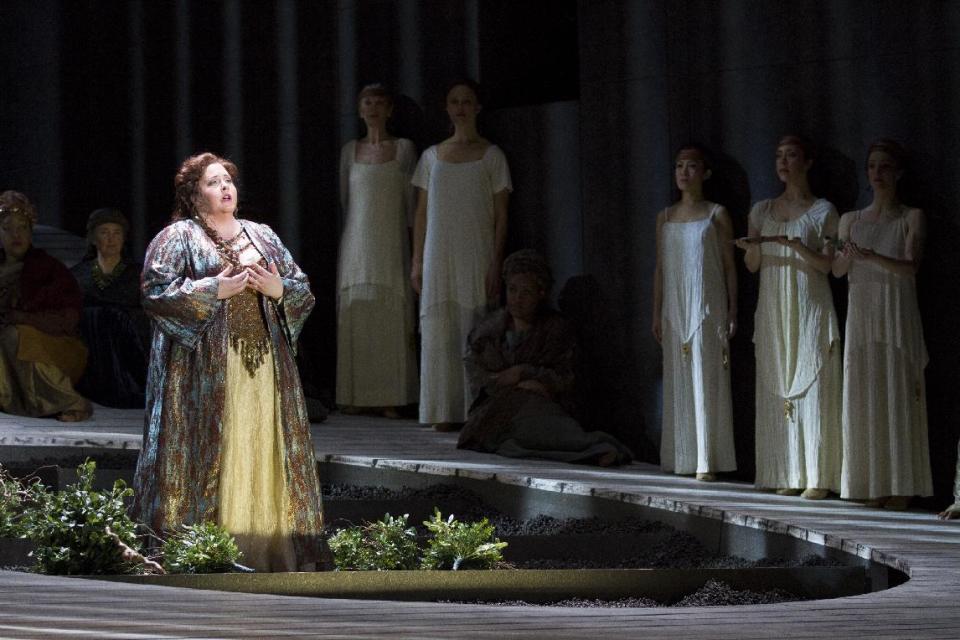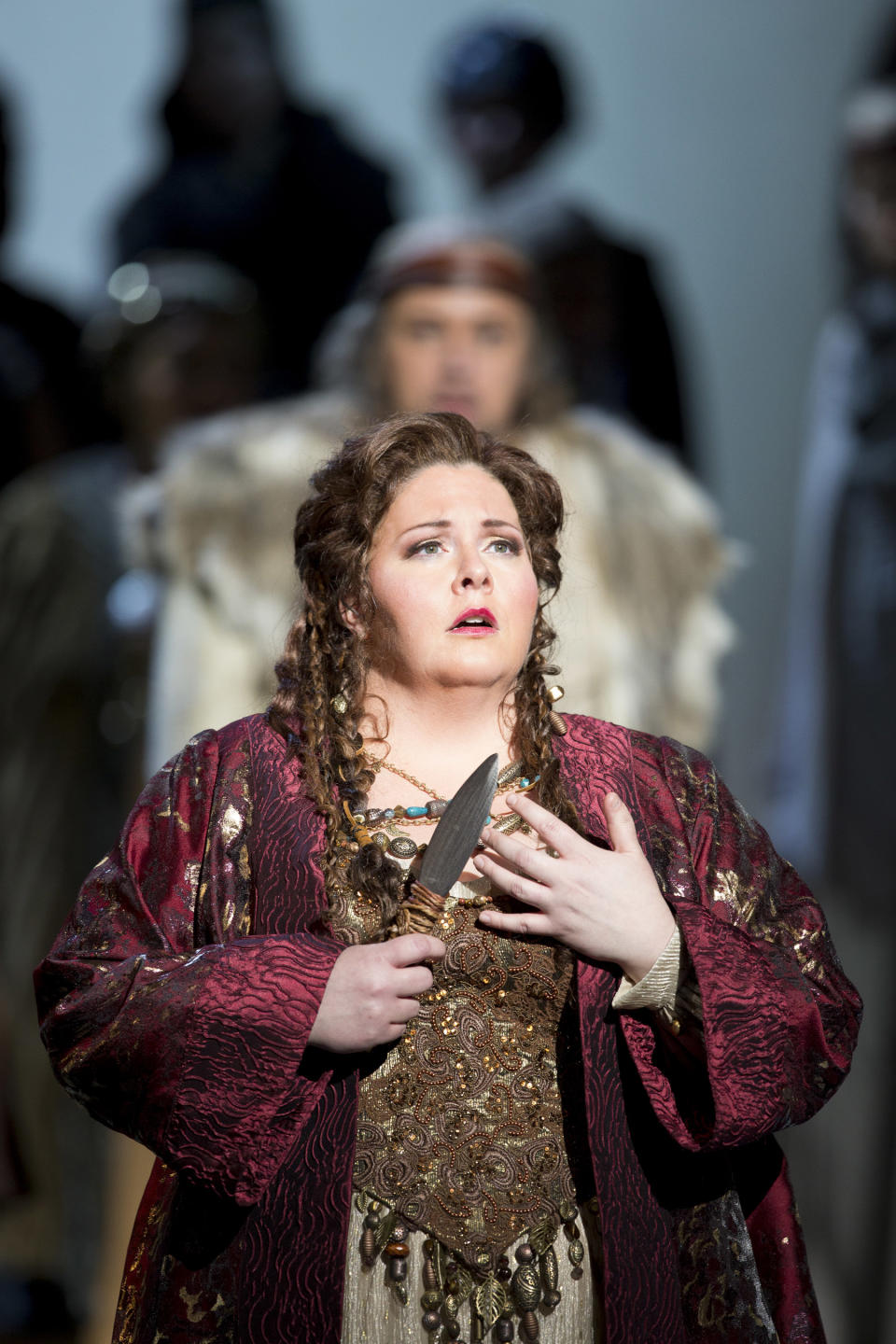New roles for Racette and Meade at DC Opera
Two American sopranos — one established, one up-and-coming — showed off their considerable talents in roles new to them at the Washington National Opera over the weekend.
On Sunday afternoon, Patricia Racette gave a moving, richly sung performance as the impetuous young beauty who becomes a courtesan and then dies in exile in Puccini's first breakout hit, "Manon Lescaut." On Friday night, Angela Meade brought her prodigious gifts to perhaps the most daunting role in the bel canto repertoire, the Druid priestess in Bellini's "Norma."
"Manon Lescaut" proved by far the more satisfying performance overall. Racette, a noted interpreter of "Madame Butterfly" and "Tosca," saved this Puccini role until now, in her late 40s. It's a deceptively difficult part because it puts strenuous demands on the soprano's voice and requires her to enact the arc of Manon's career in four short acts. Racette was perhaps least effective in the opening scene, where the soloists tended to get lost amid the bustle of the crowd. But she took firm hold in Act 2 as the kept woman of a wealthy old man, bringing glamour to her gavotte and wistful elegance to the aria "In quelle trine morbide," as she reflects on her lost love, the Chevalier des Grieux. In the final scene, her bright soprano imbued the great lament, "Sola, perduta, abandonnata," with searing emotion and exquisite control, notwithstanding some widening vibrato at the very top.
As des Grieux, Bulgarian tenor Kamen Chanev offered some ringing high notes and sturdy if not plush sound in the rest of his range; Italian baritone Giorgio Caoduro etched a lively portrayal as Manon's brother, Lescaut. Philippe Auguin, the WNO's music director, conducted ably, bringing a fluid sense of pacing to Puccini's most melodious opera.
The production by John Pascoe, new in 2004, frames the story with a curtain-within-the-curtain that displays translated pages from the Abbe Prevost novel on which the libretto is based. It's a useful device that helps fill in the gaps in this episodic retelling of the story. The costumes and scenery are traditional, except for the final scene, where an ominous orange-and-red sky looms behind a wasteland strewn with a few large chunks of broken statuary.
Meade's stage debut as Norma carries an asterisk, since she sang it in concert at the Caramoor Music Festival in the summer of 2010. She was impressive then and now, in her mid-30s. She has grown into the role and sings it with more assurance and daring. She also showed some welcome emotional identification with the character's suffering, though there is room for her interpretation to deepen. Her vocal range and technique are awesome, especially when she's spinning out a ravishing high note.
As her friend and rival in love, the American mezzo-soprano Dolora Zajick remains a force of nature at age 60, with a powerhouse lower register and amazing flexibility in the heights, though on this occasion she sang flat a good part of the evening. Still, she produced a couple of high pianissimos to rival Meade's, and the two of them set off sparks when their voices blended in their duets.
As Oroveso, Norma's father, the Russian bass Dmitry Belosselskiy sang with imposingly firm and appealing tone. But Puerto Rican tenor Rafael Davila was out of his league as Pollione, the Roman who has abandoned Norma after fathering her two children. His high notes were loud but dry, and elsewhere he lacked the burnished sound that can make his character a worthy foil for the heroine.
Meade and the others had to operate without any assistance from the dreary, cheap-looking new production by director Anne Bogart. There was a dire hint of things to come as the curtain rose, when a bedraggled chorus of Druid priests entered from the sides of the auditorium wearing mismatched cloaks, hats and trousers designed by James Schuette that looked as if they had been purchased at a thrift shop.
The single set by Neil Patel had a raked stage with wooden flooring and slats leaning to one side to represent the Druids' sacred forest grove. A round pit in the middle doubled as Norma's dwelling in later scenes. Barney O'Hanlon's choreography featured faux-Egyptian hand gestures and pseudo-Isadora Duncan movements.
It didn't help, either, that conductor Daniele Rustioni led a loud and rather four-square performance and that the orchestra played out of tune a few times.
There are three more performances of "Norma" and two more of "Manon Lescaut" through next weekend.
___
Online:
http://www.kennedy-center.org/wno/




